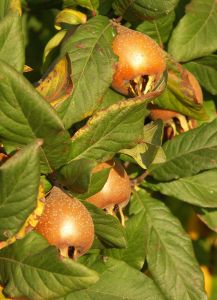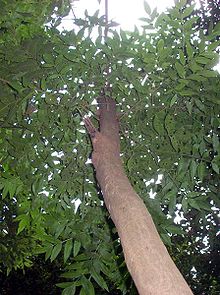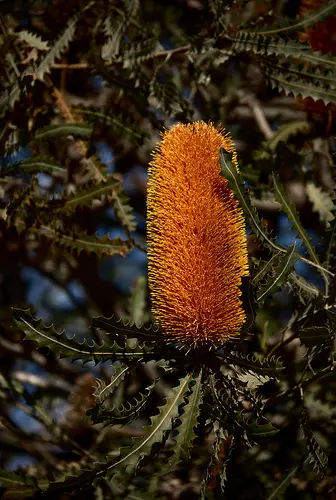Loquat
Also known as the Japanese medlar, the loquat is a fruit tree that is from the Rosaceae family. The name is actually rather misleading, as it is actually indigenous to south-eastern China. It was introduced into Japan, and has been cultivated there for over 1,000 years. It has also become naturalised in the Mediterranean Basin and India. It is also found in Hawaii, where it is thought that Chinese immigrants carried the loquat there. This fruit has been featured in Ancient Chinese literature, such as in the poems from the then prominent poet, Li Bai. It has also been used in paintings, such as the Loquats and a Mountain bird painting from the Southern Song Dynasty (1127 – 1279). In Portuguese literature, it was mentioned before the Age of Discovery (15th century).
The loquat tree is easy to grow in mild temperate and subtropical climates. It is often grown primarily as an ornamental tree. The secondary reason is for its wonderful sweet fruit. As the tree has bold foliage, it adds a great exotic, tropical look to gardens and contrasts well with other normal garden plants.
The loquat is an evergreen tree or shrub. It has a short trunk, round crown, and woolly new twigs. A tree can grow between 5 to 10 metres tall, but it is often shorter at around 3 to 4 metres tall. The leaves are about 10 – 25 cm long, and are dark green, leathery, and tough. Flowers appear during the autumn or early winter, and fruits ripen in late winter or early spring. The flowers are white and 2 cm in diameter. The flowers have a very sweet aroma that can actually be smelled from a distance.
The fruits of the loquat tree grows in clusters. They are either pear, round, or oval-shaped and are about 3 to 5 cm long. They have a smooth yellow or orange skin. The flesh is white, succulent and tangy. It is also high in sugar, pectin, and acid. They are low in sodium and saturated fat, and are high in dietary fibre, vitamin A, manganese, and potassium. It is excellent eaten in fruit salads, fruit cups, pies, tarts, jam, chutney, jelly or poached in syrup.
Loquats also play a part in Traditional Chinese Medicine. If a lot of loquats are eaten, then it will provide a gentle sedative effect that will last up to 24 hours. Loquat syrup is used to sooth the throat, sort of like a cough drop. Combined with other ingredients, the leaves of the loquat tree is made into ‘pipa gao’ (loquat paste) which acts to soothe the respiratory and digestive system. They can also be used to make light wine. However, the pips and young leaves of the loquat are slightly poisonous, however they do not cause any harm.
Loquats are also used to create a fruit wine through fermentation. Sometimes, this can be made just with white liquor and crystallised sugar. Some alcohol connoisseurs also enjoy sake made exclusively from the loquat tree seed. However, as the seed contains cyanogenic glyosides. Drinking this sake in bulk may result in cyanide poisoning.





[url=https://joyorganics.com/products/organic-cbg-cbd-tincture ]cbg tinctures[/url] purvey a tactful and enjoyable method in return experiencing the intricate’s effects. Within reach in a big series of flavors, strengths, and blends, they agree to for accurate dosing and transfer effects that incline to matrix longer. Uncountable users transform to these gummies to save their calming and stress-reducing benefits. That said, it’s basic to use them responsibly, as the initiation of effects is typically slower than with methods like smoking or vaping. Always string dosage recommendations and affirm that their play is authorized in your область in the past consuming or purchasing.